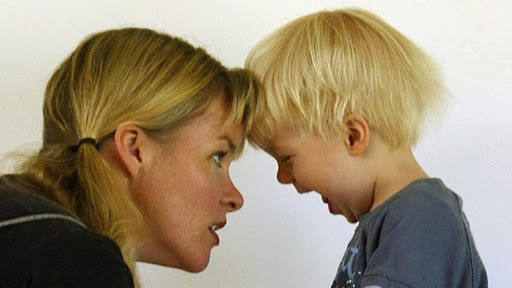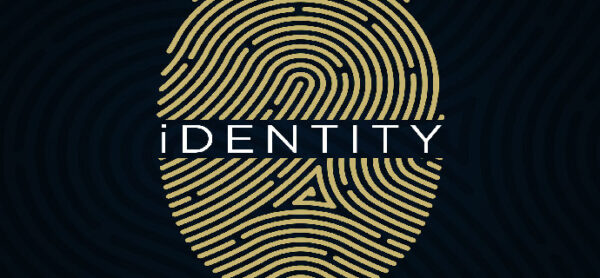“Attachment Therapy” is a phrase that researchers and therapists use inconsistently. Sometimes it refers to a cooperative and helpful activity for both parents and children. However, it usually refers to a contentious program that may injure a child, disrupt family relationships, and provide very little assistance. Here’s a detailed guide to the “attachment-based therapy.”
What Is Attachment Therapy?
Attachment therapy is a method that promises to help children with reactive attachment disorder. It is meant to push young children to express their anger as a result of their caregiver’s early abuse of them. The goal is to unblock the child’s emotions so that he or she would behave according to the wishes of the parents. It is frequently encouraged for adoptive children.
Attachment-Based Therapy vs. Attachment Therapy
Attachment-based therapy is commonly used to refer to the more traditional style of family therapy to distinguish between other types of therapy. It is used to treat depressed or suicidal adolescents, whereas attachment therapy is usually used to treat adopted children.
So, attachment-based family therapy promotes parents and children to work together. It also helps family members trust each other more by dealing with emotions in a friendly environment. Its emphasis is on healing ties to address the attachment needs of teenagers by encouraging improved parental caregiving.
What Is Reactive Attachment Disorder (RAD)?
Children must be diagnosed with reactive attachment disorder for their insurance policy to cover attachment treatment. Children who have reactive attachment disorder are unable to build bonds with a specific caregiver when they are young and are unable to form attachments as they grow older. They may have temper tantrums, act out, manipulate others, and be disobedient, stubborn, and argumentative.
Attachment Therapy Diagnosis
Assessment is the first step in attachment therapy treatment. The DSM-IV, a diagnostic manual for mental diseases, lists and describes reactive attachment disorder. Children must have reactive attachment disorder and severe emotional instability.
Despite taking just minimal histories, therapists diagnosing the disease frequently go further than necessary to substantiate their conclusion. They’ve frequently reported severe behavior, such as cutting puppies’ heads off or lighting fires.
The Initial Checklist
Therapists have attempted to develop a reliable test for evaluating whether or not a kid has reactive attachment disorder. To begin, a checklist was created. This checklist was strikingly similar to sexual abuse checklists. The responses of parents were evaluated based on how the child’s behavior affected them. The children’s responses were graded based on their bad behavior.
The Randolph Attachment Disorder Questionnaire
This first checklist was deemed invalid, so the Randolph Attachment Disorder Questionnaire (RADQ) was developed to diagnose “attachment disorder,” a diagnosis thought to encompass RAD as well as characteristics of conduct disorder and oppositional defiant disorder. The DSM-IV does not include this condition.
Research has found the RADQ to be reliable. The only issue was that only those involved in developing the test researched it. Furthermore, the study design did not adhere to standard research practices.
Read Also: REGRESSION THERAPY: Definitive Guide to the Regression Treatment
Attachment Therapy Methods
Most people who are inexperienced with attachment therapy approaches find them strange. Attachment therapists argue that they are important and beneficial, although there is little evidence to back up their claims. Holding and rebirthing are the two basic tactics used in therapy.
#1. Holding Therapy
One or more therapists hold the kid tightly in their arms while holding a treatment. They restrict the child’s movement in an attempt to incite the child’s wrath. A movie demonstrating the approach provided some examples of what actually occurs in holding a therapy. The therapists are as follows:
- Seized the child’s face
- Yelled at the child
- Shaking the child’s head
- Bouncing the Child’s head.
- Insulting the child, calling her names like a twerp and a liar.
- Threatening the child that her parents would forsake her.
Attachment therapists disagree on when holding treatment should be utilized. Some argue that parents should do it for one hour every day, even if their children are typical. Others just use it in RAD therapy for children. Others, however, argue that it should only be used in extreme cases where other methods have failed.
#2. Rebirthing
Rebirthing is an attachment therapy approach that is hazardous after a child dies during treatment. Full-grown people hold the child down or lean on him or her while he or she is wrapped in a blanket and blanketed with cushions.
Despite the caregivers’ efforts, the child must battle to escape from the blanket. This is designed to recreate a new birth experience for the infant, giving them a second shot at building their initial, critical attachment.
This technique is not used by all attachment therapists. However, it is used frequently enough to cause anxiety among parents and children.
#3. Therapeutic Foster Parents
The therapeutic foster parenting technique is another strategy often utilized in attachment therapy. The child is removed from their home and placed in a foster home where adults who have received attachment therapy serve as parents.
Read also: COUPLES THERAPY: A Definitive Guide & All You Need
Attachment Therapy Parenting Techniques
Attachment therapists anticipate that parents will participate actively in AT. They are taught parenting approaches that are, at best, dubious. The therapist teaches them how to utilize these tactics at home and when to use them. They are occasionally employed in therapeutic foster parenting, but even then, the parents are expected to learn and use them when the kid returns to their home.
#1. Total Adult Control
Adults are supposed to exercise “complete adult control” over their children. Nothing is left to the child’s discretion. This is intended to target not only damaging habits but also any behaviors that differ from what the parent likes.
#2. Information Withholding
During ordinary activities, therapists encourage parents to withhold information for their children. This strategy is regarded as critical for comprehensive adult control. When a child is unsure of what to expect, he or she is likely to follow their parents’ lead.
#3. Withholding Food
In rare circumstances, parents are encouraged to withhold or limit their child’s food intake to “teach” them. This is reminiscent of behaviorism and classical conditioning. The assumption is that if the child is hungry enough, he or she will do what the parent wants. Attachment therapists refer to this practice as “German Shepherd Training.”
#4. Strong Sitting
Strong sitting is an attachment therapy approach that entails forcing the kid to sit on the floor for up to two hours or more with legs crossed and hands folded at the chest. According to some therapists, this is employed because it is a suitable position for thinking and meditation. Others regard it as both a kind of punishment for disobedience and a training tactic.
#5. The Child Is Being Broken
Attachment therapy parenting approaches are intended to “break the child,” much like breaking a horse. AT assumes that if you break the child’s will, they will accept the authority of their parents and become submissive and pleasing to them. AT is oblivious to the consequences on the child. The emphasis is on what works best for the parent.
#6. Daily Infant Caregiver Session
Attachment therapists teach parents to conduct regular infant-caregiver sessions, usually for one hour per day, in addition to these restrictive tactics. The parent holds the child, feeds them, rocks them, embraces and kisses them, gives them delicious snacks, and otherwise cares for them as if they were a baby. When the parent wants to, they will do so, but never when the youngster begs it.
Is Attachment Therapy Supported by Science?
The scant research on attachment therapy purports to show that it is an effective treatment. However, little or no independent research has been conducted on the subject.
The research was carried out in a commercial setting rather than an academic one. This study contains several scientific flaws. This is true for many elements of the investigation, including study design, statistical analysis, and subject recruitment.
So far, attachment therapy looks to be an unproven practice.
Is Attachment Therapy Dangerous?
Accidents can occur as a result of the physical force adults use on children in attachment therapy. The death of a girl during a rebirthing event was one of the most shocking. The girl was unable to remove herself from the blanket. The therapists were so intent on keeping her down, yelling at her, humiliating her, and stopping her from fleeing that they didn’t detect she had suffocated and perished within the blanket.
This tragedy inspired Colorado lawmakers to pass Candace’s Law, which prohibits the practice of rebirthing therapy in the state. However, the prohibition only applies to the state of Colorado.
Many conventional therapists are concerned about the emotional damage that attachment therapy might bring, in addition to the severe physical implications.
What Makes Attachment-Based Therapy Unique?
Attachment-based therapy is distinct from the term “attachment therapy.” Attachment-based treatment is based on the pioneering work of John Bowlby, one of the early inventors of early attachment theory.
Bowlby’s work, as well as that of his immediate successors, was centered on improving the lives of children first and foremost. Later, his successors attempted to assist the parents of these children, but the ultimate goal was to heal the adults so that they might be more helpful to their children.
Validity in Science
There is a wealth of reliable research on attachment-based family therapy. Many well-conducted studies demonstrate the efficacy of this therapy for children suffering from sadness and anxiety. So, the research looked into various components of attachment-based therapy.
GS Diamond conducted many randomized controlled trials to investigate the impact of attachment-based family therapy on children undergoing treatment for depression, suicidal ideation, and anxiety. These investigations were founded on good scientific concepts and mathematical analysis.
Best Practices
Attachment-based family therapy contains nothing that is fundamentally hazardous. Therapy is non-aggressive and compassionate. So, no harmful instances have been reported, and given the nature of this therapy, they are unlikely to occur.
Therapy Objectives
While attachment therapy seeks to dominate and defeat the kid, attachment-based family therapy seeks to heal family ties. ABFT aims to strengthen the child’s relationship with their parents while also emphasizing the value of their autonomy.
Techniques for Attachment-Based Family Therapy
The distinction between attachment therapy and attachment-based family therapy strategies is stark. ABFT approaches are intended to help children with attachment issues heal emotionally.
Reframes of Relationships
Relational reframes are the first use of ABFT procedures. Relational reframing strategies are intended to move the attention of therapy away from the symptoms that triggered treatment and toward the treatment itself. Instead, the goal is to repair family relationships so that they are more secure and trusting. This sets the foundation for the youngster to feel understood and cared for, as well as for the parent to recognize their shortcomings in meeting their child’s needs.
Priority should be given to primary emotions and unmet attachment needs.
A primary emotion is a way you feel about an event, person, location, or thing. Primary emotions are intense. Minor incidents can occasionally set them off. So, they have a biological component in that they activate your body’s fight or flight response.
If you are anxious about going to school, anxiety is your dominant feeling. It’s a secondary feeling if you’re embarrassed or irritated over your anxiousness. Secondary emotions are triggered by cognitive processes rather than bodily sensations.
The primary emotion is the emphasis on attachment-based family therapy.
Experiences with Corrective Attachment
Corrective attachment experiences provide a way to access the inherent biological attachment system that everyone possesses. During talk therapy, the counselor may identify if the child has an attachment issue.
The therapist uses attachment behaviors, such as pleasant eye contact, to help the child form a link with them as their counselor. When the child responds positively, the therapist explains what just happened so the youngster understands that they can build attachments.
As the child learns how attachments form, he or she also learns attachment behaviors. Corrective attachment events can also occur between children and parents. When they do, the therapist explains how it worked and how it benefited them.
Holding can be used in attachment-based family therapy, but it is not the same as holding treatment in AT. The holding for ABFT is soft, loving cuddles and hugs that allow the kid to accept or reject the attention as they see fit.
Seeking Help for Attachment Disorders
What should you do if you are concerned about your child’s conduct and suspect they have an attachment disorder? The truth is that attachment disorders are far too serious and complex to attempt to treat on your own. Hence, you’ll need the assistance of a therapist to guide you through the procedure.
So, you can talk to a licensed counselor at Regain.us whenever and wherever it is convenient for you. Online counseling is straightforward and inexpensive. You can talk about whatever mental health challenges you’re dealing with, knowing that your sessions are 100% confidential.
These attachment issues are difficult to resolve on your own, but with the right assistance, you and your kid may create a better bond that benefits you, your child, and society as a whole.
Is Attachment Therapy Still Used?
Attachment theory has had a greater effect in the area of psychotherapy during the last 15 to 20 years than almost any other model, technique, or movement. Despite the fact that it is not a clinical methodology, it has justified a wide range of therapeutic ideas and practices.
What do they do in attachment therapy?
Holding therapy, in which a child is firmly held (or lain upon) by therapists or parents, is the most popular type of attachment therapy. Therapists use restriction and confrontation to elicit a variety of responses in the kid, such as fury and despair, with the goal of obtaining catharsis.
Why Is Attachment Theory Wrong?
Attachment theory suffers from a significant flaw in that it fails to appreciate the profound implications of social class, gender, ethnicity, and culture on personality development. Growing up in a low-income family is the strongest predictor of adult depression or anxiety in many cultures.



